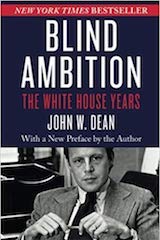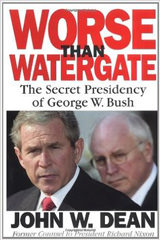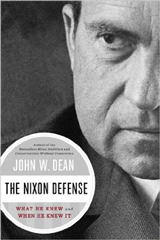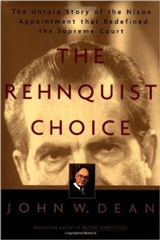On November 14, 2016, Donald Trump, a man with no personal experience whatsoever with the federal government, designed his White House staff by placing at the top of the staff two men with equal power: Steven Bannon, who is designated with a new title “chief strategist,” and Reince Priebus, taking the traditional title of “chief of staff.” Neither Bannon nor Priebus has prior experience in the federal government either, nor do the other players with access to Trump and part of his inner circle: Kellyanne Conway and Jared Kushner.
Since Trump’s inauguration there have been stories about the power struggles between the players, principally the Bannonites versus the Priebusites. For example on January 20, 2017, CNN reported on “The Power Struggle Among Trump’s Inner Circle”; by February 3, 2017, The New Yorker reported on “Steve Bannon and Reince Priebus’s War For the White House”; and two weeks later the Washington Monthly headlined “Right Wing Media on the Bannon vs Priebus Power Struggle.”
Trump’s White House operations, which have produced mostly chaos during his first two months in office, are on my mind because I am reading an advance copy of journalist Chris Whipple’s new book, The Gatekeepers: How the White House Chiefs of Staff Define Every Presidency (publication date April 8, 2017). If past is prologue, and I believe that to be true, then based on Chris Whipple’s findings, Trump has asked for trouble, and will likely get more chaos.
Whipple found that modern presidents without a strong chief of staff have not done well. Neither JFK nor LBJ had strong chiefs of staff, and after Kennedy’s Bay of Pigs debacle, he made his brother, Attorney General Bobby Kennedy the de facto chief; LBJ remained his own chief of staff, and allowed the Vietnam War to both get out of hand and consume his presidency. When Vice President Jerry Ford assumed the presidency after Nixon’s resignation, his first impulse was to have no chief of staff. That quickly proved a disaster so he reversed himself. Similarly, President Jimmy Carter went two years with no chief of staff and accomplished little. A president who is occupied controlling the schedule for which aides can use the White House tennis court is wasting his time. Whipple notes that even when Carter finally installed Hamilton Jordan as his chief of staff, Jordan was not well suited for the post, and that choice cost him a second term.
Today, Whipple found, the post of White House chief of staff is based largely on the model that President Nixon’s chief of staff, H. R. “Bob” Haldeman, designed and operated, notwithstanding the fact that Haldeman mismanaged Watergate and other Nixon illegal excesses disastrously. As Whipple discovered, and mentioned to me when interviewing me about the Nixon White House, Whipple said Haldeman himself attended a January 1986 symposium with other living chiefs of staff in San Diego, California, where he was asked how the Watergate scandal had happened. “The thing that went wrong is that the system [he had developed for the White House] was not followed. Had we dealt with [Watergate] in the way we set up from the outset . . . we would have resolved that matter satisfactorily, probably unfortunately for some people, but that was necessary and should have been done. It wasn’t done, and that was what led to the ultimate crisis.” As I told Whipple, to his surprise and as he quotes in the book; “That’s exactly what happened.”
Haldeman created a checking and balancing system that was employed on most everything at the Nixon White House, except for Nixon’s excesses—which led to the demise of his presidency. The lesson is obvious. The White House needs a strong internal staffing system, because issues that arrive at the White House could not be resolved at a lower level and they are important. Thus, if a mistake is made, it will likely harm the president. But if such a system is created and then not employed, it might as well not have even existed. A White House that treats every problem and situation in an ad hoc fashion, without careful and complete staffing, will inevitably hurt the president.
Whipple’s book shows how smoothly a White House with a strong chief of staff with the checks, double checks, and controls of the Haldeman system can operate, as well as how poorly it can be for those that do not get it together. Briefly stated, under the Haldeman model, a chief of staff controls the president’s schedule, and the access of people and paper to the president. He makes certain the president sees who he needs to see and receives the information he needs when he needs it, and together he and the president work out the president’s schedule. Presidential travel today is extremely complex, requiring careful advance planning. The message from Whipple’s book—aside from being a fascinating read about the inner-workings of the Ford, Carter, Reagan, Bush I, Clinton, Bush II, and Obama White Houses—is that a president who organizes conflict and struggles in the staffing system, thus exacerbating the inherent conflicts of a staff seeking to influence the most powerful political office in the world, is heading for problems.
Trump ran his real estate and branding organization by encouraging staff conflicts. A commercial business seeks ideas and solutions that make the most money. Government exists for a very different reason as rather succinctly stated by the nation’s founders. To paraphrase and quote: Governments are instituted to secure the self-evident truths “that all men are created equal, that they are endowed by their Creator with certain unalienable Rights, that among these are Life, Liberty and the pursuit of Happiness.” While the words of the Declaration of Independence are not expressly repeated in the Constitution, nor has the jurisprudence of the so-called “declarationists” (see, e.g., an essay on declarationsim) embracing and promoting this concept, it remains an accurate explanation for why we have a government.
I wish I could have told Whipple that Haldeman’s operations of the White House were designed to make certain the president’s programs and actions were designed to accomplish this fundamental purpose of government, but I doubt that has ever been the operating measurement for any president or chief of staff. Rather the White House staff operation takes as a given the president’s plans and programs are consistent with and in furtherance of these reasons we have government, and like the president, everyone who works for the federal government pledges to support and uphold the U.S. Constitution, the charter for government operations, thus controlling the execution and implementation of any president’s campaign pledges and promises.
The Haldeman model was anything but prosaic or lofty, rather it was designed to control the president schedule so that he was only involved in matters that required his attention, that all papers and people going to the Oval Office went through Haldeman, so he could determine if the matter required presidential attention. While Nixon wanted to set policy he wanted the executive departments and agencies to both provide him with suggestions and follow through with his decisions. Nixon’s tapes show two themes dominated his thinking. He wanted to bring about world peace, which would not only get him reelected to a second term, but also give him the prominent place in history he craved. The other thought driving him would in the end doom him. As noted by Whipple: “Nixon was determined to do one other thing: exact revenge on his enemies.” I am sure Whipple noticed when going through Nixon’s White House papers—particularly materials once located in “special files” – often addressed Nixon’s efforts at revenge and this fell outside the normal staffing system.
What Haldeman’s system also did was prevent the very type of White House atmosphere that Trump is encouraging: creating divisions, rivalries and competition within the staff. No palace intrigue was tolerated. Nixon’s biggest prima donnas were two academics: Patrick Moynihan and Henry Kissinger. Haldeman handled them both well. Moynihan soon departed to run for the U.S. Senate, successfully. Kissinger survived even Watergate, tarnished but in control of U.S. foreign policy, for other than Nixon, no one understood it better than Henry.
Staff divisions, rivalries and competition result in ruffled-feathers, hard-feelings, if not back-stabbing. The reasons there are so many leaks from the Trump White House is because of this internal strife, and while Trump may have found it produced good money making ideas in his business operations, it is difficult to see how staff discord produces the best public policies.
Just look at the immigration policy produced by the Bannonites in the two Executive Orders banning Muslims, which have been blocked by federal judges. These are the epitome of bad staff work. Everything that could be done wrong in developing and implementing Trump’s campaign promises on immigration has been done.
It is said the as president, Franklin Roosevelt gave conflicting assignments to staff to obtain differing views. Under the Haldeman model, however, good staffing provided the president with all possible views setting forth the upside and downside, good and bad, pro and con, of each. As Chris Whipple’s work shows, the most successful White House operation were, to uses Donald Trump’s inchoate dream of his own White House, “fine-turned machines.” But so long as Trump is encouraging the Bannonites and Preibusite, not to mention Kellyanneites and Jaredites to struggle for his favor, I am confident it will produce more chaos than actions that will reflect favorably on his presidency.
I suggest Trump read Chris Whipple’s book, but he doesn’t read, nor have the patience to listen to the audio edition. Maybe he would like Whipple’s earlier work, his documentary on the chiefs of staff, which evolved into The Gatekeepers: How the White House Chiefs of Staff Define Every Presidency. Hey, Chris, send them both to the president and his top aides. It could make us all a little safer if the material falls into the right hands.















Even if Trump could and would read Whipple’s book, I suspect he couldn’t take advantage of the advice. That would require having the insight, the humility, to think another’s ideas of how to run things might be superior to his own. Do you expect this, from a man who “knows more than all the generals”?
Well, Steve Bannon has just been removed from the National Security Council… so there’s hope.